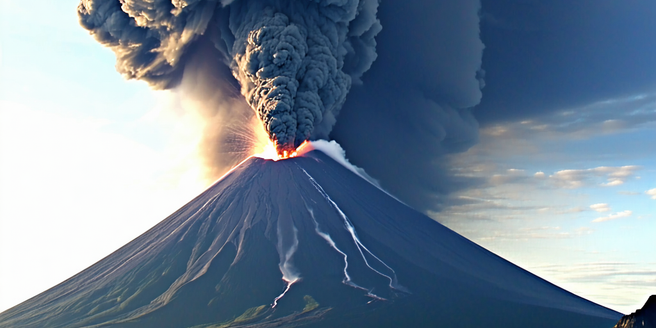
Understanding Volcanic Ash and Its Composition
Volcanic ash is comprised of tiny fragments of rock, minerals, and volcanic glass created during explosive volcanic eruptions. Unlike ordinary ash from fires, volcanic ash is hard, abrasive, and often corrosive. Its composition varies based on the volcano and the type of eruption. The composition typically includes silica, alumina, iron oxide, and other materials that contribute to its distinctive properties. Due to its fine particle size, volcanic ash can remain suspended in the atmosphere for extended periods, affecting air quality and visibility. Understanding the mineralogical components is essential to assess its impact on aircraft, infrastructure, and health. Researchers continue to study how variations in composition influence its behavior and fallout pattern, providing vital insights to mitigate the risks associated with its widespread distribution.
The Role of Volcanic Ash in Atmospheric Processes
Volcanic ash plays a significant role in atmospheric processes. When ejected into the atmosphere, ash particles can influence weather patterns by reflecting sunlight, thus cooling the Earth’s surface. This phenomenon, known as volcanic winter, can lead to global climatic changes if the eruption is large enough. Additionally, ash clouds can facilitate cloud formation by acting as nuclei for water droplets, potentially altering precipitation patterns. The ash also affects chemical reactions in the atmosphere, interacting with greenhouse gases and other pollutants. Understanding how volcanic ash influences atmospheric conditions is crucial for developing accurate climate models and predicting weather changes following volcanic eruptions. By studying these processes, meteorologists can improve forecasts and develop strategies to mitigate the impacts on aviation and human health.
Challenges in Incorporating Ash into Weather Models
Incorporating volcanic ash into weather models presents numerous challenges. One major issue is accurately modeling the transport and dispersion of ash clouds, which depend on various factors like wind speed, atmospheric pressure, and particle size. Additionally, predicting ash fallout requires understanding the physical properties and behavior of different ash types. Discrepancies in data quality and real-time monitoring limitations further complicate the integration of ash into existing models. Furthermore, the impact of ash on the atmosphere, such as altering light scattering and temperature, must be precisely quantified to improve model accuracy. Researchers continuously work on enhancing computational models and employing advanced technologies like satellites to capture real-time data. Addressing these challenges is essential for providing reliable forecasts and mitigating the adverse effects of volcanic ash on communities and aviation.
Technologies Enhancing Ash Detection and Analysis
Recent advancements in technology have significantly improved the detection and analysis of volcanic ash. Satellites equipped with thermal and multispectral sensors are pivotal in monitoring ash clouds, providing crucial data on their size, composition, and movement. Ground-based radar systems complement satellite data, offering real-time updates on ash plume dynamics. Additionally, drones equipped with sensors allow for close-up investigations, helping identify ash properties and concentrations at various altitudes. Computer models now incorporate machine learning algorithms to predict ash dispersion, enhancing the accuracy of forecasts. Optical particle counters and spectrometers provide detailed insights into the physical and chemical characteristics of ash particles, aiding in more precise hazard assessments. These technologies are crucial for protecting aviation, enabling authorities to issue timely advisories and minimize the impacts of volcanic ash on air travel.
Case Studies: Impact of Volcanic Ash on Weather
Several case studies highlight the impact of volcanic ash on weather systems and human activities. The eruption of Mount Pinatubo in 1991 is a keen example, where aerosols from the volcanic ash led to a global cooling effect, altering weather patterns for years. Another notable event is the 2010 eruption of Eyjafjallajökull in Iceland, which disrupted air travel across Europe, affecting millions of passengers. The ash cloud from this eruption provided valuable data on how ash interacts with jet streams, influencing cyclone formation. These case studies underscore the necessity for comprehensive research on volcanic ash to predict its implications on global and local scales. Lessons learned from past eruptions drive improvements in monitoring, modeling, and emergency response, aiming to minimize future disruptions and ensure public safety.
